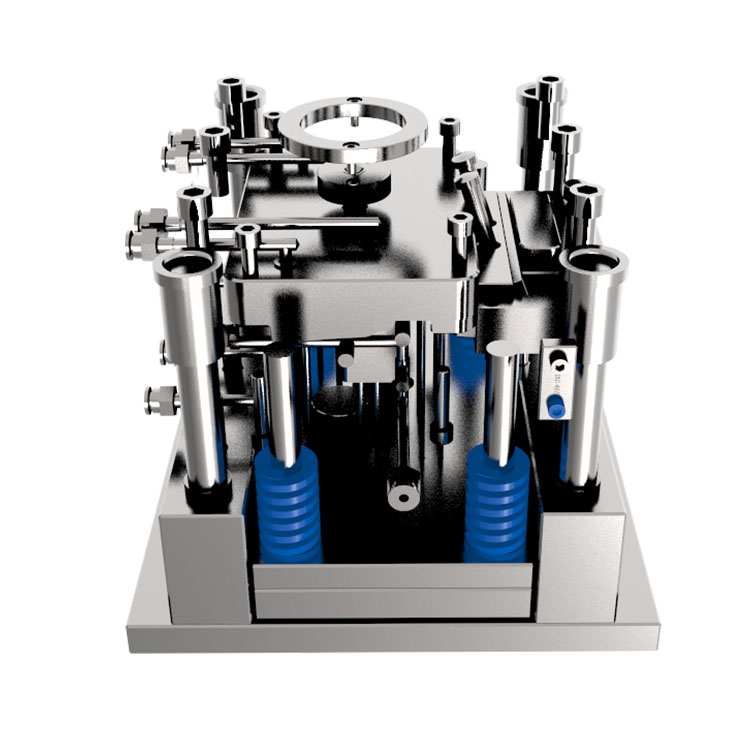Design scheme and heat treatment of injection molds for plastic mold manufacturers 123
Date: September 22, 2024

With the continuous increase of plastic products, the number of injection mold enterprises is also increasing. However, there are significant differences in the quality of molds produced by different enterprises, which has raised questions among people. Why do the same technology and materials lead to such significant differences in quality? The manufacturer of injection molds from Proni will explain the reasons behind it here.
To avoid similar problems, firstly, after determining the design scheme of injection molded products, it is necessary to have sufficient communication with the mold processing enterprise to ensure that the mold manufacturing enterprise can fully understand the detailed characteristics and molding process of injection molding, so as to more accurately complete the production and production of injection molds.
During the injection molding process, a one-stop assembly line should be implemented to avoid confusion caused by prolonged operation, which may affect the normal progress of injection molding. In addition, the machine tools and equipment used in injection molding should also be maintained carefully, and attention should be paid to handling details to obtain a batch of high-quality injection molded products.
3. Heat treatment of injection molds is also an important factor affecting the injection molding effect. The effects of injection mold heat treatment mainly include heating rate, quenching temperature, quenching speed, etc. The quality of quenching is crucial, and the quenching process and preventive measures must be strictly followed to ensure the effectiveness of the mold.
Design scheme and heat treatment of injection molds for plastic mold manufacturers 123

Plastic mold manufacturers share different quenching devices for injection molding molds and different quenching treatments. The commonly used furnace devices and workpieces for quenching treatment should be preheated to 650 ℃ and incubated for 1.5 hours to raise the temperature to below 870 ℃. Raise 1040 and incubate again at 1.5 hours ℃; Incubate for 30 minutes, rapidly cool with oil at 150 ℃, allow natural air to cool to room temperature and tempering time, but perform secondary tempering at 520 ℃ to 540 ℃.


Hmm it appears like your site ate my first comment (it was extremely long) so I guess
I’ll just sum it up what I wrote and say, I’m thoroughly enjoying
your blog. I too am an aspiring blog blogger but I’m still new to everything.
Do you have any tips for beginner blog writers? I’d genuinely
appreciate it.
Very good write-up. I certainly love this site.
Keep writing!
Hmm it seems like your site ate my first comment (it was super
long) so I guess I’ll just sum it up what I wrote
and say, I’m thoroughly enjoying your blog.
I as well am an aspiring blog writer but I’m still new to everything.
Do you have any points for newbie blog writers? I’d certainly appreciate it.
I do not know if it’s just me or if perhaps everybody else experiencing problems with your
blog. It appears as if some of the text within your
posts are running off the screen. Can someone else please comment and let me know if this is happening to
them too? This could be a problem with my browser because I’ve had this happen before.
Cheers
Thanks on your marvelous posting! I really enjoyed reading it, you could be a great
author. I will make certain to bookmark your blog and may come back in the future.
I want to encourage you to definitely continue your great
writing, have a nice weekend!
My family members every time say that I am wasting my time
here at net, except I know I am getting experience daily
by reading thes fastidious articles.
Hello, i think that i saw you visited my web site thus i came to “return the favor”.I’m attempting to find things to enhance my
website!I suppose its ok to use a few of your ideas!!
Howdy! This post couldn’t be written any better! Reading
through this post reminds me of my good old room
mate! He always kept talking about this. I will forward this write-up to him.
Pretty sure he will have a good read. Many thanks for sharing!
I have read so many articles or reviews regarding the blogger lovers but this
paragraph is actually a pleasant post, keep it up.
Your method of explaining all in this post is truly pleasant, every one can easily be aware of it, Thanks a lot.